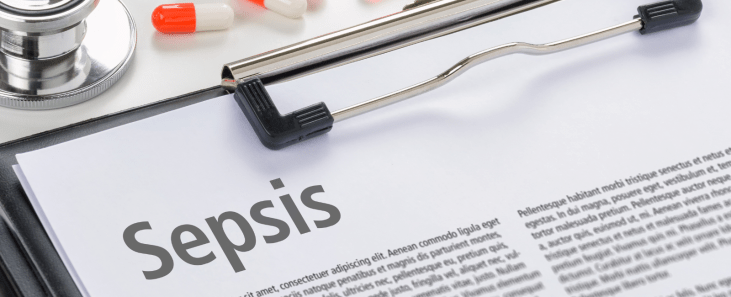What to Know About Sepsis and Sepsis Prevention

What is sepsis?
Sepsis is the body’s extreme response to an infection. As your body works in overdrive to kill the infection, widespread inflammation can quickly lead to tissue damage, organ failure, and even death.
Sepsis is a life-threatening medical emergency. If you or a loved one has an infection that is not getting better or is getting worse, you should seek medical attention immediately.
What types of infections can lead to sepsis?
Bacterial infections cause most cases of sepsis, but sepsis can also occur after viral or fungal infections.
Common infections that can turn into sepsis include urinary tract infections (UTIs), pneumonia, abdominal infections, and skin infections.
Who is at risk of developing sepsis?
Anyone can develop sepsis, but some people are at higher risk:
- Adults 65 years or older
- People with weakened immune systems
- People with chronic medical conditions such as diabetes, lung disease, cancer, and kidney disease
- People with recent severe illness or hospitalization
- People who have survived sepsis
- Children younger than 1 year
What are the signs and symptoms of sepsis?
If you have sepsis, you may have one or more of the following:
- Fever, shivering, or chills
- High heart rate or weakened pulse
- Confusion or disorientation
- Extreme pain or discomfort
- Shortness of breath
- Clammy skin
Seek medical assistance immediately if you have an infection and experience any of these signs or symptoms.
4 ways to prevent sepsis
Sepsis is treatable, but treatment requires urgent medical care, usually in the intensive care unit of a hospital.
With fast diagnosis and treatment, most people survive, but complications (including organ damage, amputation, and post-sepsis symptoms like fatigue and decreased cognitive function) can occur.
Knowing how to prevent sepsis can help you avoid potentially life-changing impacts. Here are four strategies for sepsis prevention:
- Develop an effective handwashing routine. The first step to preventing sepsis is preventing infections by killing the germs that cause them. Use warm or hot soapy water, lather your hands, and rub your hands together vigorously, making sure to clean between your fingers and beneath your nails. Washing your hands properly should take between 15 and 20 seconds. Always wash your hands:
- Before preparing or eating a meal
- After using the restroom
- After coughing, sneezing, or blowing your nose
- After contact with commonly touched surfaces, such as door handles, light switches, and elevator buttons
- After contact with pets
- Stay up to date with vaccinations. Vaccines (such as the influenza vaccine and pneumococcal vaccines) help protect against viral infections by tricking your body into thinking it’s already been infected with the virus. Your body then develops antibodies against the virus. Talk to your doctor about which vaccinations may be right for you.
- Treat infections early. If left untreated, even seemingly minor infections — like a UTI — can cause your immune system to kick into overdrive, leading to sepsis. Do not attempt to self-treat an infection at home. You may need a dose of antibiotics, antivirals, or antifungals prescribed by your doctor to fight the infection.
- Take antibiotics as directed. Do not stop a course of antibiotics early, even if you start to feel better. The bacteria may not be completely gone, leading to recurrent infection that could progress into sepsis. Tell your doctor if your symptoms do not improve or worsen. Some bacteria may be antibiotic resistant, meaning they’ve developed the ability to withstand the drugs designed to kill them. You may need an alternate drug to treat your infection.



